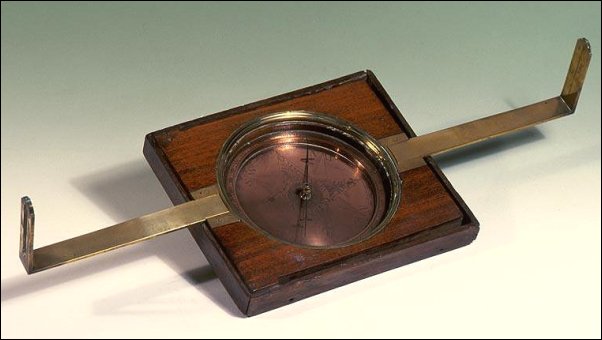To
return to the previous page click the blue arrow at the top right
of this page
or the one at the bottom right.
This
boxed dry compass was made by Alexander Oliphant in 1804. It was
a very important piece of equipment for navigation on the open sea.
The compass consists of a magnetised iron needle mounted on a pivot
above a copper disc. The disc has been etched with the name of the
maker, the compass points and a 360 degree scale. It is set in a
brass ring in a wooden box and has two removable brass sights. The
lid of the box is missing.
The
compass works because the needle will always point North. The needle
swings over the disc and by lining up the direction of travel using
the sights, the bearing could be read from the scale around the
edge.

©SCRAN/Scottish
Fisheries Museum
19th
century brass azimuth compass
|